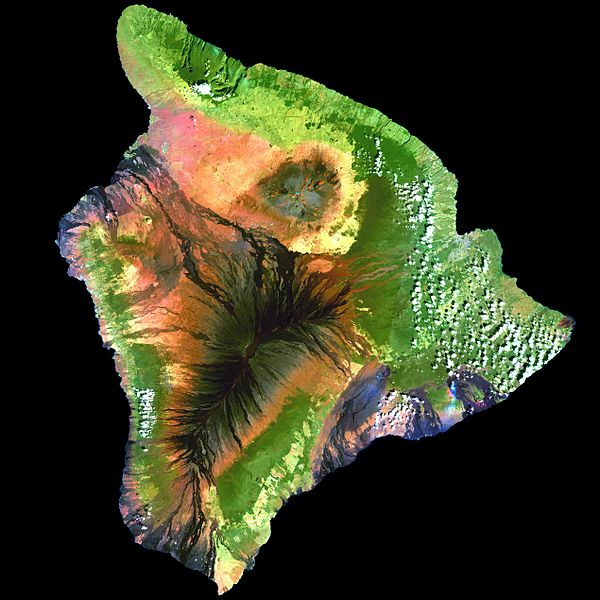Barkas:Island of Hawai'i - Landsat mosaic.jpg

Gedhéning pratuduh iki: 600 × 600 piksel Résolusi liya: 240 × 240 piksel | 480 × 480 piksel | 768 × 768 piksel | 1.024 × 1.024 piksel | 2.048 × 2.048 piksel | 5.076 × 5.076 piksel.
Berkas asli (5.076 × 5.076 piksel, ukuran barkas: 5,19 MB, jinis MIME: image/jpeg)
Sajarahing berkas
Klik ing tanggal/wektuné saprelu ndeleng rupané barkasé nalika tanggal iku.
| Tanggal/Wektu | Gambar cilik | Alang ujur | Naraguna | Tanggepan | |
|---|---|---|---|---|---|
| saiki | 1 Sèptèmber 2009 11.59 |  | 5.076 × 5.076 (5,19 MB) | Túrelio | saved with 95% quality (low compression), but without "progressive" option |
| 1 Sèptèmber 2009 11.59 |  | 5.076 × 5.076 (4,9 MB) | Bidgee | Fix thumbnail generation issue caused by progressive loading. | |
| 1 Sèptèmber 2009 11.31 |  | 5.076 × 5.076 (4,91 MB) | Rocket000 | reuploading | |
| 27 Dhésèmber 2007 11.52 |  | 5.076 × 5.076 (4,91 MB) | Avenue | {{Information| |Description=This simulated true-color image of the island of Hawai'i was derived from data gathered by the Enhanced Thematic Mapper plus (ETM+) on the Landsat 7 satellite between 1999 and 2001. |Source=[http://veimages.gsfc.nasa.gov/2712/l |
Panggunaning berkas
Kaca ing ngisor iki nganggo barkas iki:
Panggunané barkas sajagat
Wiki liya ngisor iki nganggo barkas iki:
- Kanggo ing af.wikipedia.org
- Kanggo ing ar.wikipedia.org
- Kanggo ing ast.wikipedia.org
- Kanggo ing az.wikipedia.org
- Kanggo ing be.wikipedia.org
- Kanggo ing bn.wikipedia.org
- Kanggo ing br.wikipedia.org
- Kanggo ing ca.wikipedia.org
- Kanggo ing ceb.wikipedia.org
- Kanggo ing cy.wikipedia.org
- Kanggo ing de.wikipedia.org
- Kanggo ing de.wikivoyage.org
- Kanggo ing en.wikipedia.org
- Hawaii (island)
- Mauna Loa
- Landsat program
- Geoinformatics
- Puna, Hawaii
- User:Spikebrennan
- Portal:Hawaii/Selected article
- Portal:Hawaii/Selected article/11
- Wikipedia:Featured picture candidates/February-2008
- Wikipedia:Featured picture candidates/Big Island of Hawai'i
- User:Hawaiian Mafia
- User:Aoi/sandbox
- Kanggo ing es.wikipedia.org
- Kanggo ing es.wikibooks.org
- Kanggo ing eu.wikipedia.org
- Kanggo ing fa.wikipedia.org
- Kanggo ing fr.wikipedia.org
- Kanggo ing fr.wikivoyage.org
- Kanggo ing ga.wikipedia.org
- Kanggo ing haw.wikipedia.org
- Kanggo ing he.wikipedia.org
- Kanggo ing hi.wikipedia.org
- Kanggo ing hu.wikipedia.org
- Kanggo ing ia.wikipedia.org
- Kanggo ing id.wikipedia.org
- Kanggo ing incubator.wikimedia.org
- Kanggo ing is.wikipedia.org
- Kanggo ing ja.wikipedia.org
Deleng naraguna liyané sadonya saka kaca iki.
